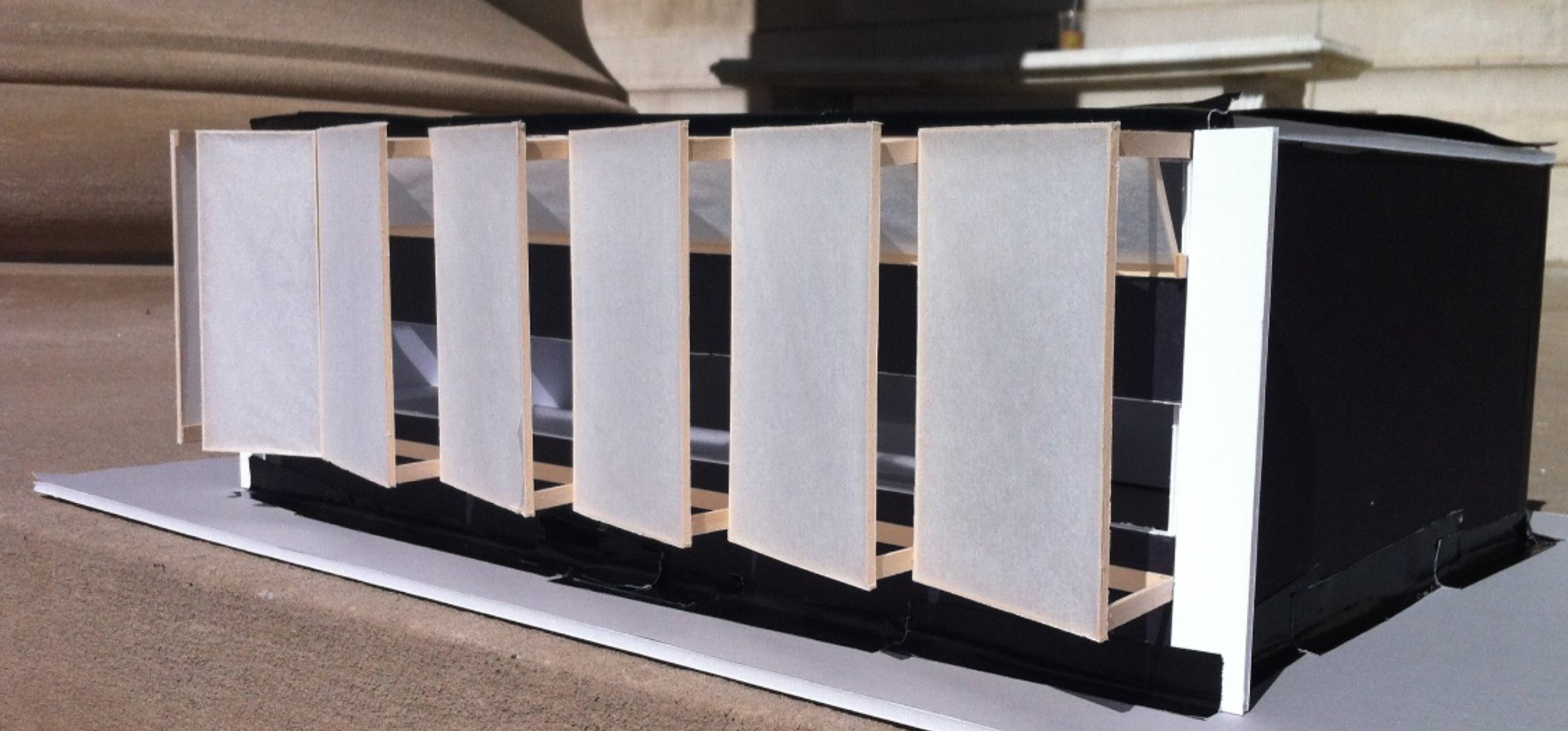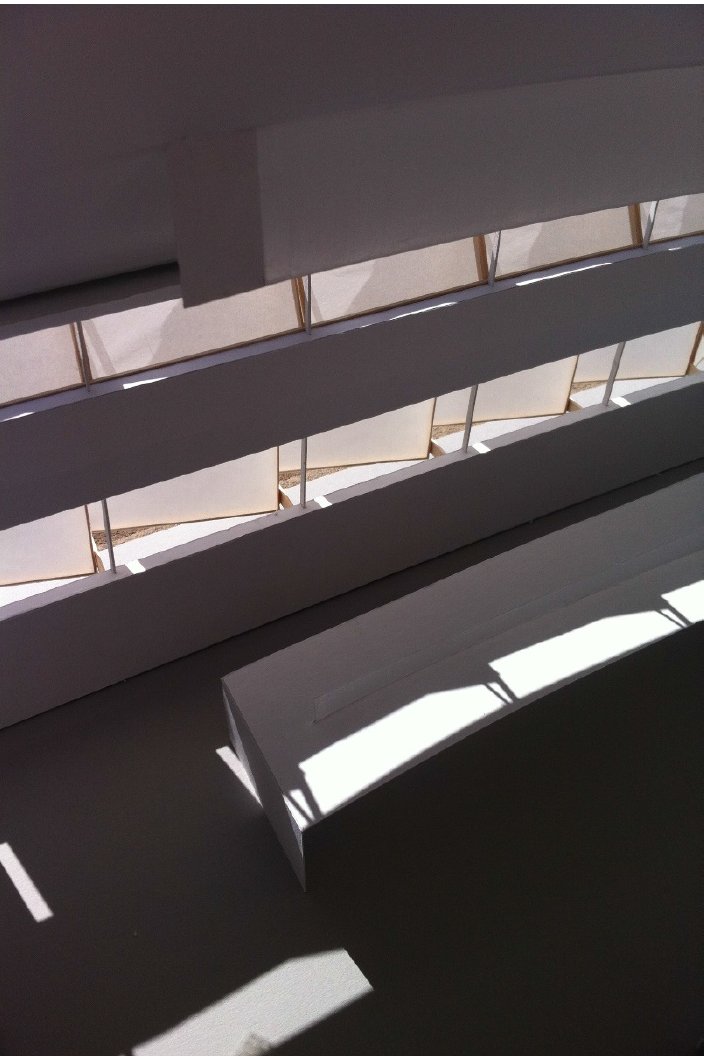Heliodon Study Background Material: DH-I chapter 8 | MIT lecture: Physical Models
The goal of this exercise is to further validate and refine the static shading system developed in the previous exercise using a physical model of a daylit space plus a heliodon. In order to do so, follow the steps outlined below.
1. Plan your heliodon experiment A heliodon study yields part qualitative, part quantitative results. The first step is hence to a make decision about the desired quality and character of the daylight in your study space. Before beginning the model construction, discuss your design intentions. The following list provides different possible functions of light in a space (list compiled by Dan Weissman):
- Light to emphasize movement
- Light to define rhythm
- Light to de-materialize form
- Light to support a thermal sensation
- Light for seasonal awareness
- Light to emphasize surfaces properties
- Light to emphasize structure
- Light to provide orientation
- Light to develop a hierarchy of space
2. Build A Scale Model Depending on the scale of oyur project and the type of heliodon that you are using build a ½” to the foot model and prepare it for the experiments that you developed in step 1. You may, for example, choose one specific element of the design for which you would like to test various options. This could be exterior variants such as louvers or window sizes and locations, or interior variants such as light shelves, material properties or ceiling profiles. It is advisable to develop your design in sketch form before constructing the model, in order to properly plan for your experiments as well as how to incorporate a smartphone camera and how to mount the model on the heliodon. An example scale model by Madeline Gardillas and Catherine De Wolf is shown below.
Exterior View |
Interior View |
 |
 |
3. Heliodon Measurements Conduct the heliodon measurements on a clear day and compile your results. Popular outcomes are solar patterns in a space during solstice and/or equinox days such as in the animation by Andrew Sang, Nicole Wand and Sean Tang below. Explain what you have learnt from the experiment and how this information will influence your design going forward.